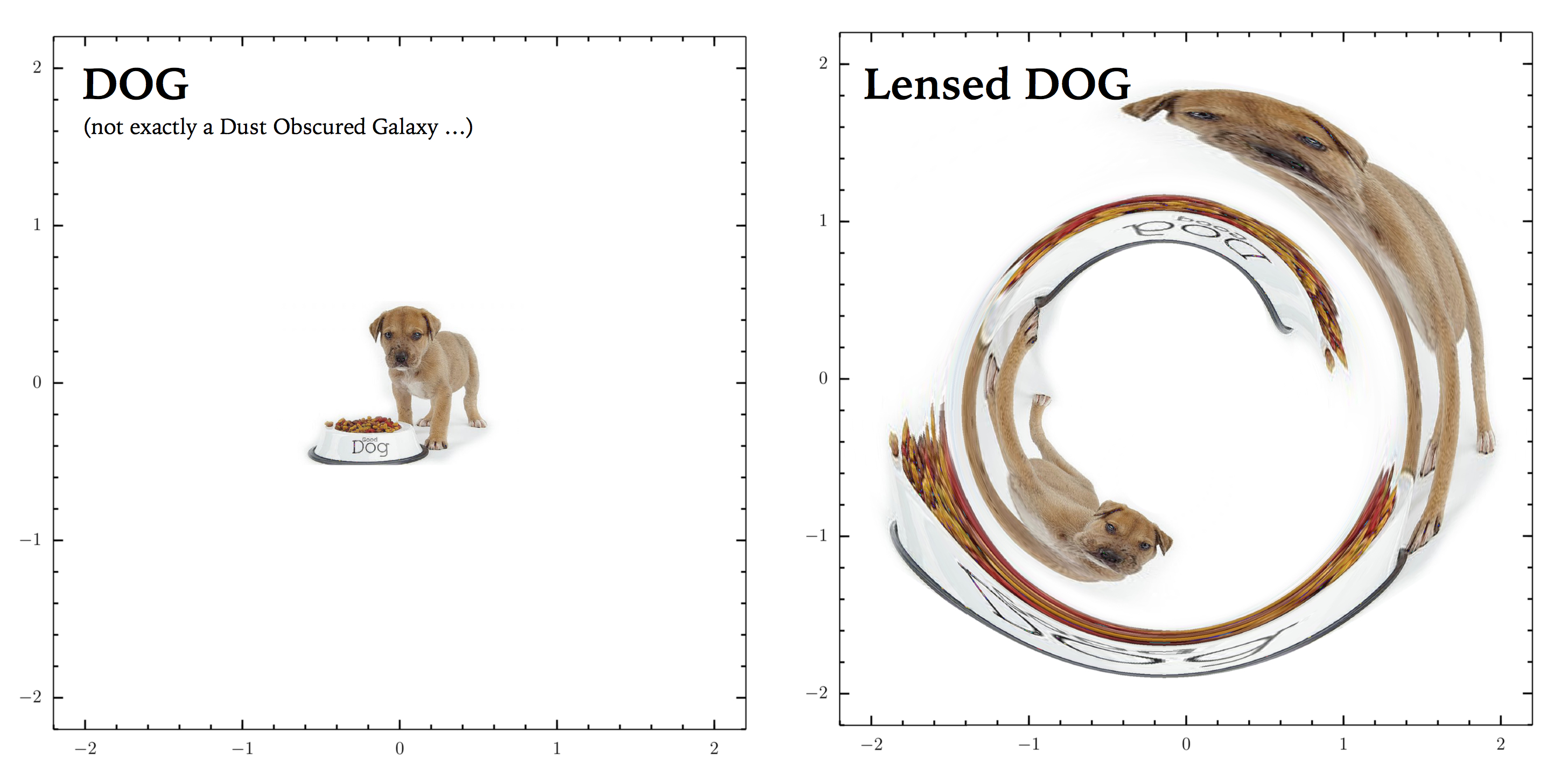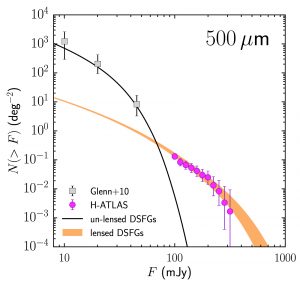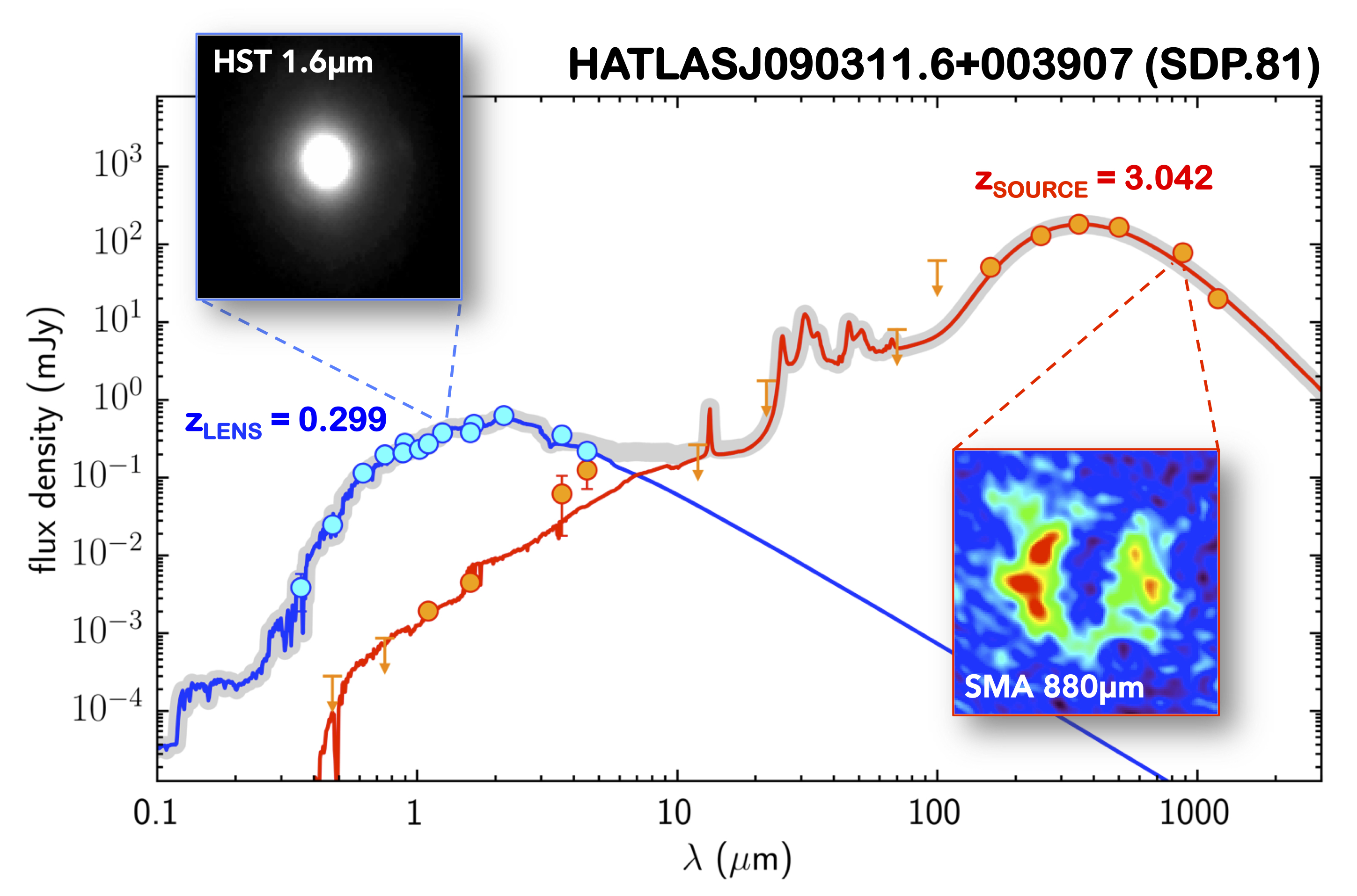Gravitational lensing is the most striking example of how gravity affects the fabric of space and, consequently, the path of photons reaching us from distant sources in the Universe. (Strong) gravitational lensing events occur when a massive object lies very close to the line-of-sight to a distant galaxy: the foreground mass acts as a lens by re-directing photons from the background galaxy towards the Earth, thus increasing its apparent luminosity. The lens also induces the formation of multiple images of the background galaxy, which are stretched over large areas, thus providing a magnified view of the distant source (Fig. 1). These two combined effects make strong lensing events powerful astrophysical tools, used to carry out a detailed investigation of the physical and morphological properties of high redshift sources and to probe the distribution of dark matter in the Universe.

Unfortunately, strong lensing events are rare, as they rely on an almost perfect alignment between the observer and two sources at different redshifts. Therefore wide-area surveys and efficient methods to pick up strongly lensed galaxies are needed to find them in a significant number.
Looking for lensed galaxies in the sub-mm/mm
For decades, optical and radio observations have provided large data sets to be exploited for this kind of search, together with the sub-arcsecond spatial resolution needed to recognise the typical features of strong lensing, i.e. multiple images, arcs and rings (e.g. Treu 2010). However, thanks to the wide area images provided by the Herschel space observatory (Pilbratt et al. 2010) we can now carry out a systematic search for lensed galaxies also at sub-millimetre wavelengths (and at millimetre wavelengths with the South Pole Telescope).
The Herschel Astrophysical Terahertz Large Area Survey (H-ATLAS; Eales et al. 2010) is the widest area extragalactic survey undertaken with Herschel, covering more than 600 square degrees of the sky and providing a sample of more than a hundred of thousands of high redshift (z > 1) dusty star-forming galaxies (DSFGs) for statistical studies. One of its scientific goals is the systematic search of strong lensing events. Unfortunately, both lensed and un-lensed DSFGs appear as featureless “blobs” in the Herschel images because of the limited spatial resolution of the telescope. In fact, in a strong lensing event the typical separation between multiple images is of the order to one to few arcseconds, a scale more than 10 times smaller than the ones probed by Herschel. So, how to single out lensed sources from the un-lensed ones in the Herschel data?

Any contaminant, in the form of either very nearby galaxies or radio bright blazars, which also appear as sub-mm bright sources, is easily identified and removed by means of shallow optical and radio imaging data.
In a proof of concept paper (Negrello et al. 2010) we reported the discovery of 5 gravitationally lensed galaxies over the first 16 deg2 of the H-ATLAS using a simple cut in flux density at 500μm. The Submillimeter Array (SMA) has played a crucial role in confirming the lensing nature of these sources (e.g. Bussmann et al. 2013; Negrello et al. 2014). In fact, the lensed galaxy is relatively faint at optical to near-infrared wavelengths, because of dust obscuration and redshift, and is, in general, overcame by the emission from the foreground object that acts as a lens, typically a massive elliptical galaxy. Therefore, high-resolution follow-up observations at sub-millimetre and millimetre wavelengths are needed to reveal the multiple images of the background source (Fig. 3).

Key facts about sub-mm/mm selected lensing events
It is important to note that, for sub-millimetre/millimetre selected lensed galaxies, the contamination of the lens – typically a passively evolving elliptical galaxy – to the sub-millimeter emission of the background galaxy is negligible (Fig. 3). Therefore, the modelling of the lensed morphology does not suffer from uncertainties on the lens subtraction, as usually happens in optically selected lensing systems.
Furthermore, our selection technique exploits the properties of the background galaxy alone, i.e. its sub-millimeter flux density, and therefore it is not biased against the redshift and the mass of the lens. In fact, we already have few confirmed lenses with redshifts z > 1. This opens up the possibility of probing the mass distribution and the abundance of dark matter substructures in galaxies out to significantly high redshifts than done so far (e.g. Dye et al. 2014, Hezaveh et al. 2016).